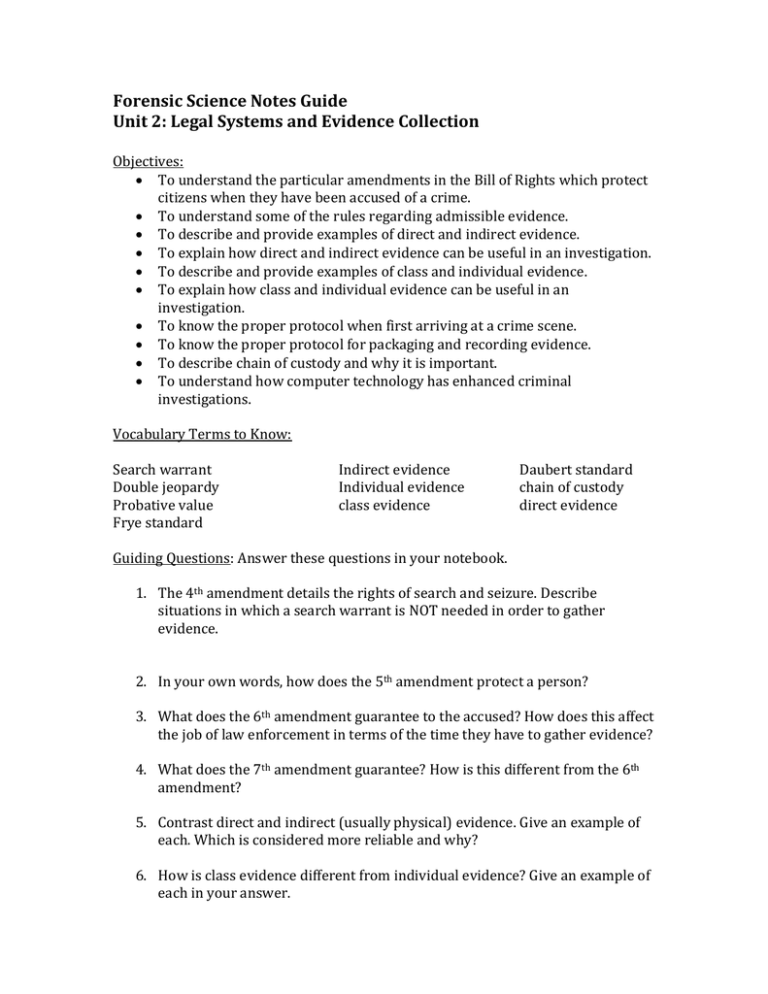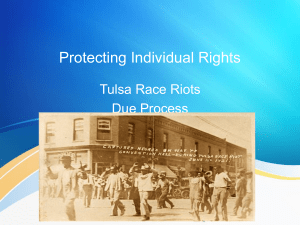FS Unit 2 Notes Guide
advertisement

Forensic Science Notes Guide Unit 2: Legal Systems and Evidence Collection Objectives: To understand the particular amendments in the Bill of Rights which protect citizens when they have been accused of a crime. To understand some of the rules regarding admissible evidence. To describe and provide examples of direct and indirect evidence. To explain how direct and indirect evidence can be useful in an investigation. To describe and provide examples of class and individual evidence. To explain how class and individual evidence can be useful in an investigation. To know the proper protocol when first arriving at a crime scene. To know the proper protocol for packaging and recording evidence. To describe chain of custody and why it is important. To understand how computer technology has enhanced criminal investigations. Vocabulary Terms to Know: Search warrant Double jeopardy Probative value Frye standard Indirect evidence Individual evidence class evidence Daubert standard chain of custody direct evidence Guiding Questions: Answer these questions in your notebook. 1. The 4th amendment details the rights of search and seizure. Describe situations in which a search warrant is NOT needed in order to gather evidence. 2. In your own words, how does the 5th amendment protect a person? 3. What does the 6th amendment guarantee to the accused? How does this affect the job of law enforcement in terms of the time they have to gather evidence? 4. What does the 7th amendment guarantee? How is this different from the 6th amendment? 5. Contrast direct and indirect (usually physical) evidence. Give an example of each. Which is considered more reliable and why? 6. How is class evidence different from individual evidence? Give an example of each in your answer. 7. What did the case of Frye v. United States, 1923 establish? How did the ruling in Daubert v. Merrell Dow Pharmaceuticals, 1993 change this? Give an example we discussed in class that exemplifies the Daubert Standard. 8. Describe what could happen if proper chain of custody is not maintained? 9. What should the first officer arriving at the crime scene do? (Hint the first letters are ADAPT) 10. What should the initial sketch of the crime scene contain? 11. Name the 4 patterns for searching a crime scene. Draw a sketch of each of them. Beside the sketch, give a description or example of the type of crime scene that this search would be used. 12. What information should each package of evidence have on it? 13. There are several national databases for different types of evidence. Identify the following: a. AFIS b. CODIS c. IBIS









